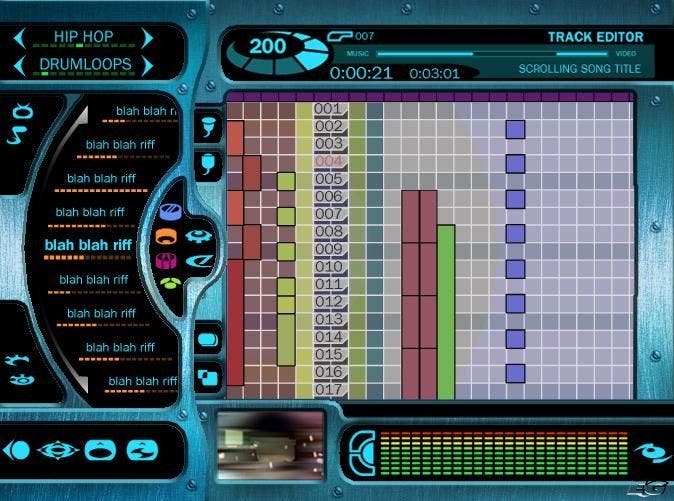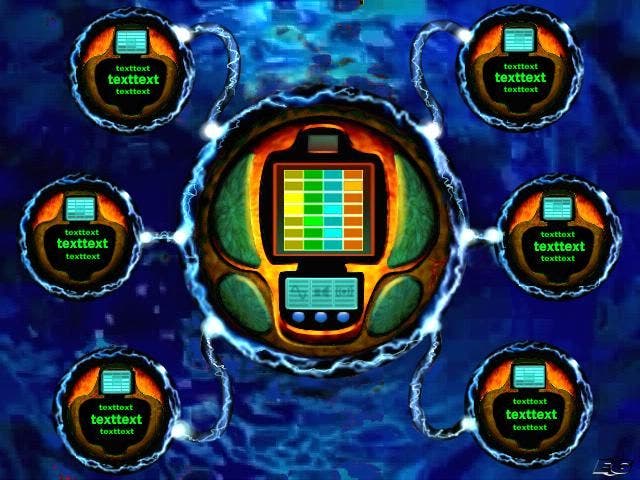Music 3
Hands-On - Jester's PS2 melody maker takes shape
I'm guessing that only a few of you will have used the previous titles in the Music series from Jester. Heck, most of you probably have virtually no musical talent whatsoever! I certainly don't. As much as I like listening to the odd beat while I'm working, give me an instrument and I'll make some embarrassing twanging noises before handing it back. My musical education ended with grade two piano, and yet with Music 3 I could create a unqiue, fairly ornate sound without breaking a sweat.

Breakbeat rules
Watching Jester's Tim Wright toying with Music 3 at a recent meeting in London, I was completely in awe. Jester's team has looked at the musical capabilities of the PS2 and built on them. Where they wanted more sound channels or a higher sampling rate, they found a software solution, and because certain aspects of your average PS2 game are insignificant to Music's makeup, the software is able to offer 20MB of space for samples and sounds - 3 minutes 38 seconds - by clawing memory away from other vital areas, like graphics.
The interface is very simple to use and consists of two main panes. On the right you can see the song in block form, with each square corresponding to a particular aspect within that bar. The left pane is used for browsing sounds, samples and instruments, and a simple (and tweaked) drag and drop will add them to a particular bar. At the top you can see the track's progress in seconds, and unlike MTV Music Generator 2 - Music 3's oddly named predecessor - you can access virtually every menu at your behest from this one screen. Creation is a very simple task.
That's not all you can do, either. The main track pane on the right can be toggled for something else, like the recording pane. Using a microphone (plugged in via a USB dongle), Tim whistled a tune and, much to my delight and his relief, Music 3 tunefully whistled it back at us, having understood it - not as a bit of data, but as actual notes - and recorded it. A couple of clicks and it was part of our song.

Pop tarts
Styles and melodies span virtually every genre imaginable. Hundreds of musical riffs are available in garage, trance, pop, dance, rap, hip hop, indie, new metal and other categories, and there are more than 16,000 sampled instruments in electronic, acoustic, orchestral, rhythm, vocals, sound effects and countless other categories. It would take months to explore everything, and with 64 simultaneous song channels to popular (a cut above the PS2's default capabilities, eagle-eyed readers will note), there's plenty of reason for that. Other effects at the composer's command include reverb, chorus, delay, phase and resonant filters, and as with everything - be it riff, effect, or what-have-you - you can always record your own. The USB sampler will hook up to CD, Minidisk, vinyl, guitar, the aforementioned microphone, and virtually anything else you can imagine. You can even pop your own CDs into the PS2 and record from them.
Mixing is another important aspect of the program, and this has seen a serious change from its predecessor, now including six decks on one screen. The interface for adding and subtracting various styles is so simple even I managed it, with options to simply raise and lower volume, perform fades both in and out and change tempo amongst others. With all six decks on one screen, scratching away a tune is easier than writing an Atomic Kitten single.
There were a few things still hanging in the balance over the code we saw. For a start, featured artists are promised, but a roster has yet to be produced, and furthermore ports to other consoles could be in the offing. As you might expect, it all comes down to the size of the audience - the Xbox may have a hard disk, which would be a huge boon for a program like Music 3, but unless you all go out and buy one in preparation, there isn't much point in a concerted development effort to support it. Nevertheless, even on the relatively restrictive PS2, the opportunities are almost endless, and though we may all be gamers at heart, as far as alternative uses for our PS2s go, Music 3 looks to rank pretty highly amongst them.

